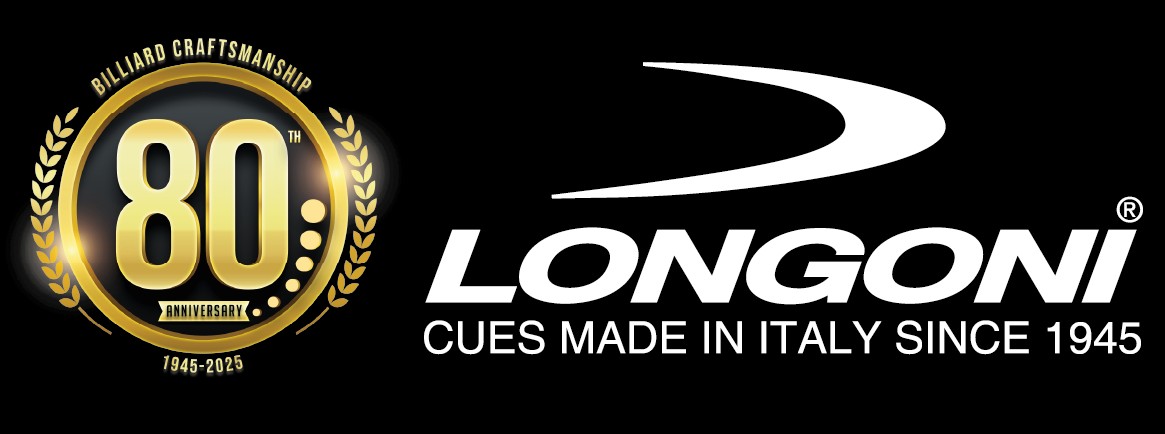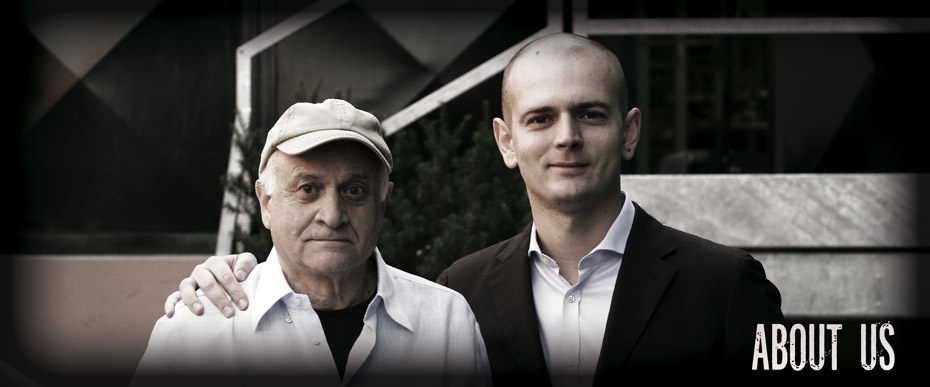
Longoni: Italian Excellence in Billiards
Longoni is the most renowned Italian brand in the world of billiards. For 80 years, the Longoni family has been designing, producing, and marketing products for this sport worldwide, especially today, billiard cues.
Longoni cues, still conceived and crafted in Mariano Comense, near Milan, are highly appreciated by top international champions for their precision, design, and reliability.
Environmental attention, workers' protection, and a deeply Italian management style give the brand reliability and prestige. Collaborations with many world champions also ensure constant technical and sporting updates across the product range.
![]() For more information: www.longonigroup.com
For more information: www.longonigroup.com
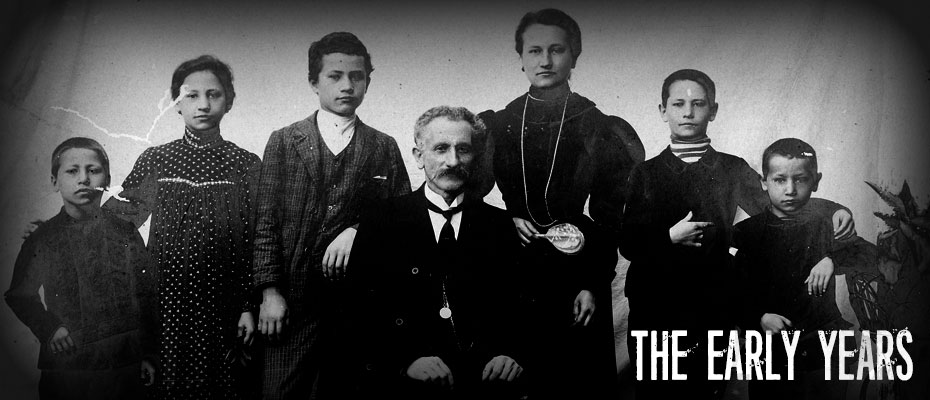
The Origins (1945)
The history of the Longoni brand began in 1945, when Alessandro Longoni, born in 1892 into a family of carpenters, decided to open his own workshop for the production and repair of cues and billiard tables. It was the post-war period: Italy was in ruins but eager to rebuild, and Alessandro, at 53 years old, chose to start over.
He had learned the craft of building billiards and cues by working for years as a skilled worker at the prestigious F.lli Della Chiesa factory in Milan, founded in 1750 and destroyed by Allied bombing during the war.
Mariano Comense and the neighboring towns, part of the renowned Brianza region, had been famous since the 18th century for wood craftsmanship: an ideal environment to found a company requiring expertise, technology, and quality materials.
The first workshop was opened by Alessandro Longoni, father of Renzo, beneath his home on via Montebello, across from Vicolo Costone—a building that still exists today. With help from his wife Maria (born in 1899) and their sons Emilio, Vittorio, and Renzo, Alessandro built a solid clientele and a growing demand for his products within a few years.
A few years later, the family moved to via IV Novembre, still in Mariano, to a larger facility, maintaining the Brianza tradition of having the workshop beneath the home. The blend of family life and work was a typical feature of Lombard culture in the post-war period.

1960s: The Development
The 1960s coincided with the Italian economic boom, and the Longoni brand fully benefited from it. Renzo Longoni, driven by strong personal motivation and immense passion for woodworking, established himself as a specialist first in the production of billiards and then of cues.
His wife Francesca Luzzi, whom he married in 1960, became the managerial soul of the business thanks to her experience in the offices of Moto Guzzi in Mandello del Lario, leading the company's expansion both in Italy and abroad, particularly in Europe and later in the United States.
Longoni billiards, mainly intended for the Italian market, gained increasing fame. At the same time, cues—then primarily one-piece and rack-type—also began to spread. However, demand for high-quality, detachable cues started to emerge, slowly but steadily.
During these years, advanced machinery was acquired from historic brands like Vaula and Pagliani & Provenzale, marking the beginning of large-scale production and an important technological leap.
Marco Tessaro, originally from Varazze in Liguria, joined the team. A master shipwright and technical expert, Tessaro had worked in shipyards and collaborated with historic cue brands in Turin. He would go on to lead production for many years.
In 1965, Renzo developed and patented the first laminated wood shaft, later known as Stratos, and introduced an innovative wooden joint for detachable cues inspired by French models.
Also in 1965, Longoni S.r.l. was officially founded, and the workshop moved to via Cappelletti 56, still in Mariano Comense, where cue production continues to this day.
In 1967, Alessandro Longoni received the Gold Medal from the Industrial Union of Como for his brilliant career.
With support from external consultant Fulvio Guanziroli, the company embarked on its first trips to the United States, beginning a decade-long collaboration with D&R of Chicago. In the second half of the 1990s, D&R would become the official importer of the first collectible Longoni pool cue series (LV and LM series).

1970s: Technical Innovation
In the 1970s, Renzo Longoni consolidated his expertise thanks to the newly acquired machinery, experimenting with innovative materials such as ergal. This led to the creation of the famous LEM cue model, crafted by hammering aluminum Ergal tubes, along with cues featuring new adjustable weight systems.
The Stratos laminated shaft technique, derived from traditional one-piece “Arlecchino” cues, was refined, and production grew significantly due to the introduction of new technologies and machinery. New metal joints were also developed, used for both aluminum and wooden cues.
In Italy, Longoni began collaborations with high-level champions, including Salvatore Centorami, Attilio Sessa, Renato Corbellini, and many others.
In 1971, MariaLuisa was born, and in 1976, Pierluigi, children of Renzo and Francesca (nicknamed Franca). The following year, in 1977, Francesca founded the commercial company Norditalia Ricambi S.r.l. together with Renzo and her brothers. This company became the commercial arm of the Longoni family, specializing in selling billiard accessories. On that occasion, the partners decided to stop the production of competition billiards, while continuing to produce design and home-use tables, supervised by Renzo’s brother Vittorio Angelo.
Meanwhile, demand for high-quality, customizable, detachable cues continued to grow. Renzo and Francesca traveled across Europe to present their products, meet new retailers, and build direct relationships with foreign champions.
In 1978, Alessandro Longoni passed away after a life dedicated to his family and work: the legacy was passed to his sons, who carried on the project launched 33 years earlier with passion and determination.

1980s: Composite Materials and International Recognition
The 1980s marked a new era for the Longoni brand, defined by technological innovation and major sporting collaborations. The company became a reference point in high-level carom billiards, thanks to support from champions like Raymond Ceulemans, Ludo Dielis, Francis Connesson, and a young Marco Zanetti.
For the first time, innovative materials such as carbon fiber, Kevlar, and fiberglass were introduced in cue construction. Longoni was quick to test these materials in its products while maintaining the strong artisanal tradition of working with wood.
At the same time, the company expanded its range of professional accessories, offering products like Blue Diamond chalk, Renzline cloths, and Longoni cue cases, which became benchmarks for players.
In the mid-1980s, after a long collaboration, Marco Tessaro retired. Antonio Saponaro, already a skilled production technician, took over his role.
During this decade, Longoni-sponsored players began to win world titles, giving the brand unprecedented international visibility.
Renzo and Francesca also began their first trips to Asia, visiting Taiwan and South Korea, anticipating a commercial expansion that would prove strategic for the brand in the years to come.

1990s: International Expansion
During the 1990s, one-piece cues gradually lost importance, while there was a strong shift towards detachable cues. To meet this market evolution, Longoni revamped its production lines, introducing more specialized machinery.
It was the decade of the first synthetic fiber cues (models C-94, G-94, K-94) with adjustable weights, and the introduction of Italy’s first CNC pantograph for inlays (1995), which revolutionized cue design and manufacturing, making it more precise and versatile.
A collaboration began with the promising Dick Jaspers, destined to become one of the greatest carom billiards champions in the world.
In 1992, the headquarters of Norditalia Ricambi S.r.l. moved to via Spaino 2 in Mariano Comense, where it is still located today. This company took on a crucial role as the commercial hub for all Longoni products, including cues. In the same year, the billiard table production section was spun off from Longoni S.r.l., creating Longoni B&P in Alzate Brianza, an independent entity led by Vittorio Longoni and his sons.
With the end of the Soviet bloc, Longoni expanded into Russia and Eastern Europe, becoming a key player in major tournaments like the prestigious Longoni Cup in St. Petersburg. A commercial office was opened in Brno, dedicated to Eastern European countries.
In the pool segment, the company established agreements with American brands like Viking and Joss, creating exclusive models like “Joss by Longoni”. In 1995, for the first time, the Longoni brand participated in the prestigious BCA expo in the United States, showcasing its pool cue range in partnership with D&R.
Renzo Longoni designed iconic models like the “Ambra” (LV-4), the “Indiano”, and the “Collection”, enriched with hand-chiseled silver, turquoise, and mother-of-pearl details.
This period also saw the launch of the first butts with real hand-sewn leather strips, a novelty that made the Longoni brand famous for introducing a grip style still highly appreciated today.
The first carbon and Kevlar shafts for pool cues were also introduced, and partnerships began with the most important Canadian suppliers of highly selected hard rock maple, which led to the development of Pro shafts and a new, even higher-performing generation of Stratos shafts.
Collaborations began with top players in the five-pins discipline, such as Gustavo Torregiani and Giampiero Rosanna, both world champions, who became brand ambassadors for many years.
At the end of the decade, Emilio, Renzo's brother, left the company, transferring his shares to Renzo and Vittorio.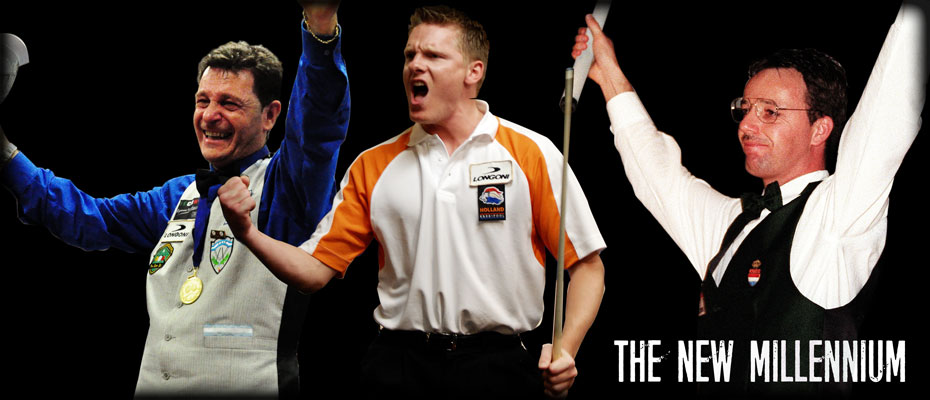
2000s: A Decade of Strong Innovations
With the arrival of the new millennium, Longoni turned toward the Asian market and began a deep modernization of its production processes. Pierluigi Longoni fully joined the company, taking on a key role in technological development and international relations. Thanks to numerous trips across different continents, new and important collaborations were established.
In 2000, the Xp joint was developed—featuring a guided fitting system—designed for pool cues and some models for Russian pyramid. This new system surpassed the previous 5/16-18 American-style joint.
The collaboration with Italian carom billiards champion Marco Zanetti was renewed, contributing significantly to the development of many successful cues such as the Leonardo, Raffaello, Ray of Light, Blue Night, and many others. After Dick Jaspers and Zanetti, numerous other prominent players would join Team Longoni.
In 2002, the first official website was launched: www.longonicues.com, allowing players worldwide to browse the catalog, contact the company for technical support, locate resellers, or provide feedback.
That same year, the first vertical CNC lathe was installed for turning butts and shafts, replacing the old cam systems. This allowed machining with decimal tolerance. The range of shafts was expanded with new woods and profiles, and quality standards were consolidated thanks to the high precision ensured by the new machines.
The Stratos shaft line was relaunched using internally developed machinery for serial cutting of the splices and new polymer mold gluing techniques. This led to the S2 laminated shaft, an evolution of the original Stratos, designed for both carom and pool.
Starting in 2000, with the organization of the first “Longoni Cup,” the brand began active collaborations with various federations to promote pool, carom, and Russian pyramid tournaments.
A collaboration also began with Claudio Frigerio, designer of most of the successful models in the Longoni collection.
In 2003, a long-term partnership began with rising Dutch pool star Niels Feijen, destined to win many world titles. Thanks to his input, Longoni’s pool cues became even more high-performing, leading to the development of the S2 shaft and the graphite version called “Luna Nera.”
In 2005, the Viper joint was introduced—made of stainless steel with a trapezoidal thread, balance-adjustable, and designed specifically for the five-pins discipline. That same year, a CNC lathe was installed for producing wooden joints, making them much more precise and standardized.
In 2007, Alessandro Longoni was inducted into the Hall of Fame of the International Cuemaker Association.
In 2008, an important evolution of the Viper and Xp joints was launched: the Vp2 joint, destined to become the absolute standard in Longoni production. The Vp2 was the first joint also made from grade 5 titanium, designed to be precise, durable, quick-closing, and multi-disciplinary. Today, it is used in nearly all Longoni models—for carom, pool, Russian pyramid, and five-pins.
That same year, a laser pantograph was installed for high-precision cutting of inlays—a first in Europe—allowing the creation of previously unseen models and overcoming traditional manufacturing limits.
The “Vibraless” system was also launched for five-pins cues, with threaded rods made using a rolling process, improving balance, durability, and butt acoustics.
Also in 2008, the Trilobite extension system was launched, developed in collaboration with a German company in Stuttgart: it was the only modular system capable of connecting various types of extensions with just a one-third twist.
Finally, in 2008, the first official importer for South Korea was appointed: Glory Leport. To combat the growing issue of counterfeits, Longoni began registering its trademark in numerous countries.
In 2009, ownership of Norditalia Ricambi S.r.l. and Longoni S.r.l. officially passed to Pierluigi and MariaLuisa Longoni, who also took over their management. Renzo Longoni remained Chairman of the Board of Directors of both companies.
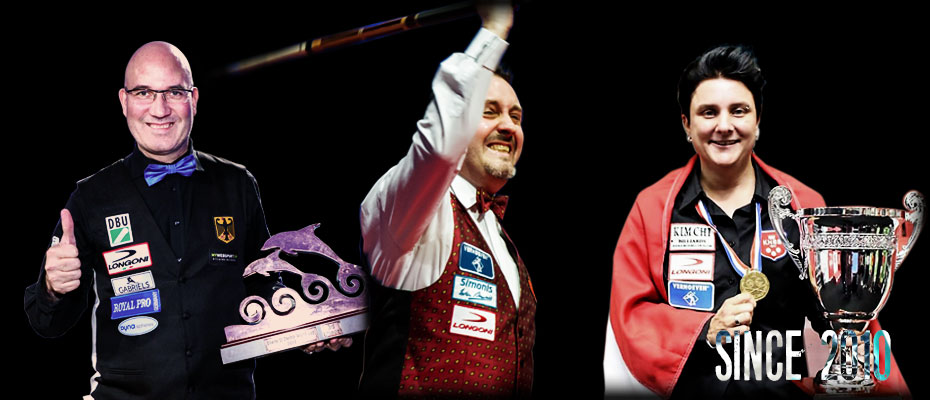
From 2010 Onward: Ongoing Evolution and Global Fame
Starting in 2010, Longoni initiated a major modernization process: many old machines were replaced with innovative systems that complemented and enhanced the company's artisanal expertise. The result was even higher quality and more consistent production.
From 2015, the number of inlay processing machines increased from two to six to meet growing market demand.
The first drying chamber for shafts with controlled humidity and temperature was installed in Europe, aiming to optimize wood density and improve durability and playability.
With these new investments, Longoni also strengthened its workplace safety, environmental sustainability, and employee well-being policies.
Asian markets were further consolidated, with ongoing expansion. After South Korea and Japan, the brand entered Vietnam in 2013. In 2014, distribution for the South Korean market shifted from Glory Leport to Kimchi Billiards.
In 2011, Longoni exhibited for the first time at an Asian trade show, the GBE in Guangzhou. In 2013, distribution for the Chinese market was entrusted to a company in Beijing.
In 2016, to celebrate Renzo Longoni’s 80th birthday, a moving mini-documentary was produced by Jean Philippe Parmentier, available on YouTube.
Numerous limited series were launched, particularly dedicated to the Korean carom scene, highly appreciated by collectors for their iconic design and uncompromising quality.
Team Longoni continued to win world titles, including in pool, with champions such as Niels Feijen and David Alcaide. During this period, the revolutionary pure graphite shaft was developed, changing the playing habits of major athletes such as Eddy Merckx, Martin Horn, and Therese Klompenhouwer.
A second high-precision vertical lathe was installed, alongside the first one (completely upgraded electronically), allowing production capacity to double.
Since 2020: The Post-COVID Billiards World
The COVID-19 emergency severely impacted Italy and led to a long lockdown period, creating clear challenges for the billiards sector. However, the halt in activity and the inability to travel gave the Longoni staff time to focus on technical improvements and new product development.
From May 2020, production resumed at full speed, and a touching video—still available on YouTube—was published to share the company’s restart.
The years between 2021 and 2023 proved to be among the most productive for the brand: sales experienced extraordinary growth, laying the groundwork for major future projects, including a complete revamp of the pool cue line, scheduled for release in 2025.
Numerous technical improvements were introduced during this period, including:
- Hexa-Core, a system for building high-performance cue cores, customizable by discipline, with options for graphite, ergal, or titanium inserts.
- The evolution of the Trilobite system, enhanced in acoustics and resistance.
- The outstanding success of the “Luna Nera” pure graphite shaft, produced in thousands of units for carom, pool, and five-pins, and available in discipline-specific profiles—this shaft revolutionized playing habits for many Longoni fans.
- The Vp2 joint was re-engineered to optimize installation in synergy with new ultra-high-precision lathes.
The machinery set was further upgraded with new technologies for coating and finishing: starting in 2023, Longoni products featured crystal-clear and durable finishes, increasingly appreciated by professional players.
The Longoni team expanded, with a division into Pro and Promoters for each discipline, strengthening the brand's presence in all sports segments and in numerous countries.
In 2022, the Longoni NextGen project was launched, an initiative to support young emerging talents in the billiards world. Among various activities, the program includes the sponsorship of promising players such as Burak Haşhaş, now a prominent figure on the Korean PBA circuit.
In 2025, Longoni officially returned to China and the United States after the pandemic-induced hiatus, participating once again in the Super Billiards Expo and the Guangzhou Billiard Exhibition. At the Super Billiards Expo, where Niels Feijen won the tournament, Longoni unveiled its highly anticipated 2025 pool cue collection.

January 2007, Alessandro Longoni was inducted into the Hall of Fame of the International Cuemakers Association.
